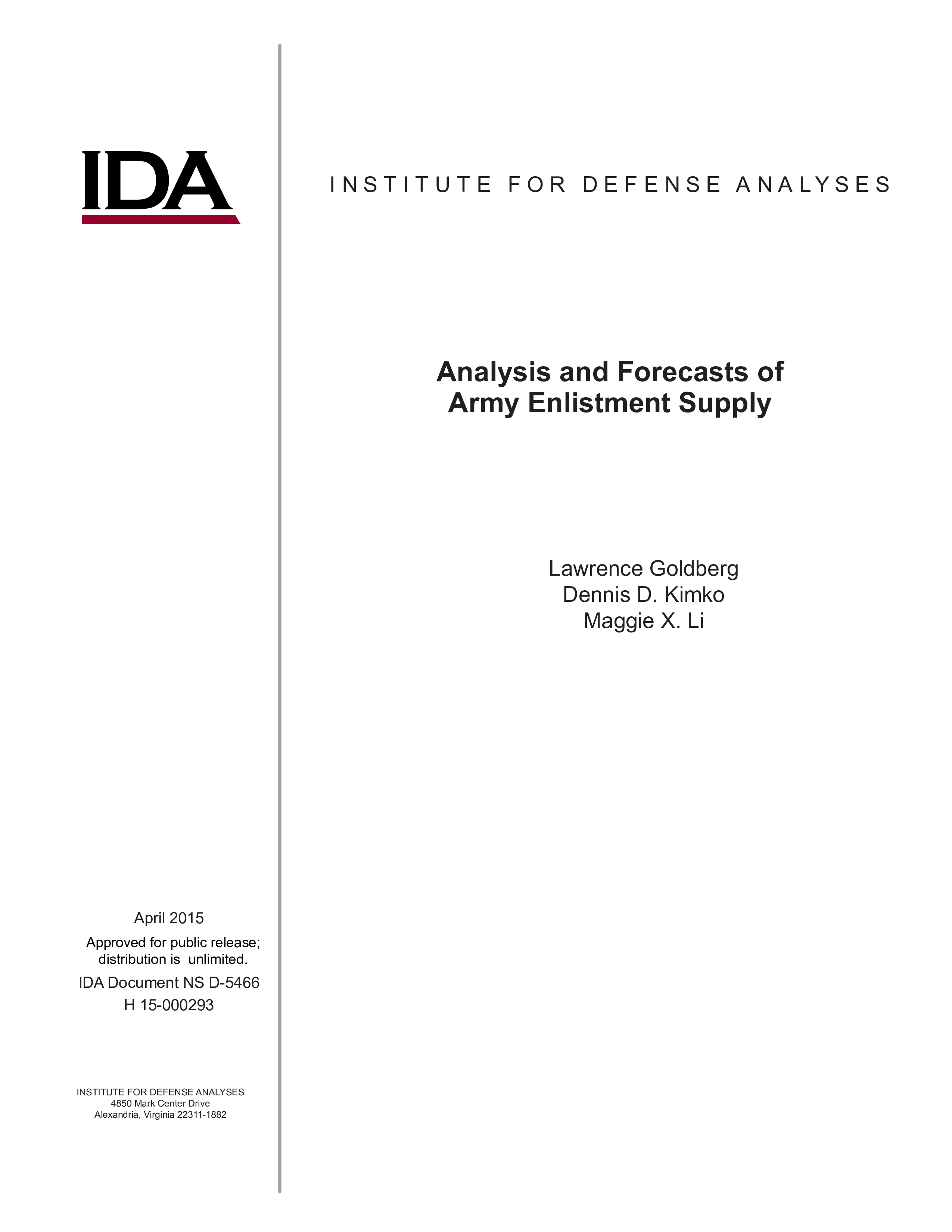Analysis and Forecasts of Army Enlistment Supply
April, 2015
IDA document: D-5466
FFRDC: Systems and Analyses Center
Type: Documents
Division: Cost Analysis and Research Division
Authors:
IDA document: D-5466
FFRDC: Systems and Analyses Center
Type: Documents
Division: Cost Analysis and Research Division
Authors:
Authors
Lawrence Goldberg Dennis D. Kimko Maggie X. Li
See more authors

